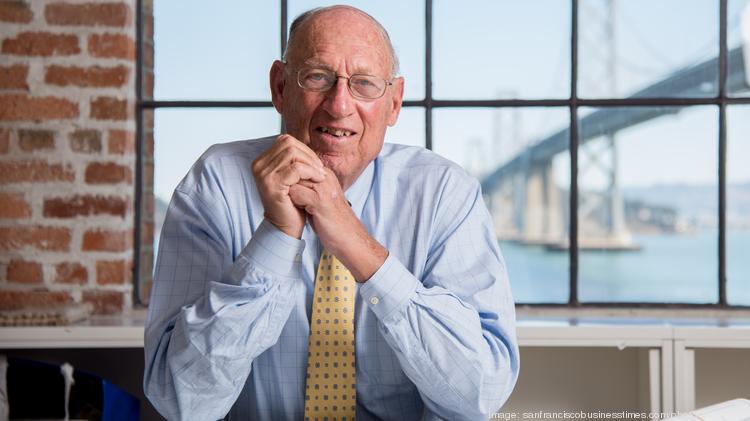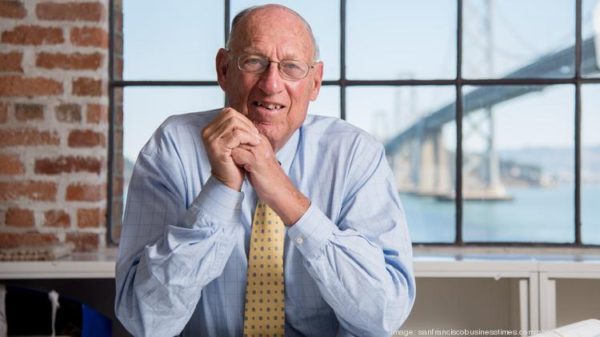
Workplace innovation puts Gensler on top of design world
For the past 51 years, Gensler has been at the forefront of the evolution of the workplace. It’s now the biggest architecture firm in the world and boasts the biggest interiors practice.
The San Francisco-based firm has clients that includ e some of the largest tech companies in the Bay Area: Facebook, Airbnb and Salesforce.com. That work has helped the firm’s Bay Area interior design income increase to $48 million in 2014, up from $32 million in 2010, according to Business Times research.
The firm’s designs focus on promoting innovation. Its annual Workplace Survey helps guide the firm’s approach and found that offices should promote collaboration and interaction, but not at the expense of individual productivity. The 2016 survey, which includ ed over 4,000 respondents in the U.S., also found that having individual areas for focus, along with meeting areas and common spaces, was critical to have a balance.
In a July report, Gensler cited the San Francisco office of advertising firm McCann Erickson as an example of balancing individual and team spaces. The office has features like small focus rooms and individual workstations in clusters with see-through mesh to create privacy, along with common areas like cafes and game tables for interaction.
“When you look at the highest-performing companies…there’s an increased amount of collaboration going on,” said Peter Weingarten, a Gensler principal who co-manages the firm’s Oakland office.
That trend has led to design changes in new office projects such as moving a building’s core, which contains the elevators, to the side so there’s a large block of space for one tenant.
Weingarten cites Gensler’s focus on not just design, but also a project’s economics as an asset for winning new projects.
“I think we’re making choices where it’s design with value creation,” said Weingarten. “We work from the inside out to make sure our product is the most attractive to the tenant market, and there’s a real value.”
At Uptown Station, the renovation of the former Sears Building in Oakland that will soon be occupied by Uber, Gensler’s design incorporates a central atrium in the building with a skylight that will bring more sunshine into the building. The design meant a loss in rentable square footage and potential profits, but it made the building more attractive to tenants, said Weingarten.
Gensler is now looking to the future, with a focus on using new technology like augmented reality, digital Building Information Modeling, and hiring computer scientists. For the design of graphics tech company Nvidia’s headquarters in Santa Clara, for example, Gensler used the company’s own software to render the office’s interior appearance and sunlight.
Gensler’s work spans far beyond interiors and offices. It has 31 practice areas, and also has services including consulting, product design such as chairs and lamps, and brand graphic design. That diversified business enabled Gensler to bounce back from the recession faster than many of its peers, said Gensler co-CEO Andy Cohen, who is based in Los Angeles. Co-CEO Diane Hoskins is based in Washington D.C.
Humble Roots
In 1965, M. Arthur Gensler founded Gensler in San Francisco with his wife and one draftsman. The firm has now grown to $1.18 billion in revenue in 2015, according to Architectural Record, and over 5,000 employees in 46 offices.
In addition to offices and housing, the firm designed the first Apple Stores, Moscone Center North and West and multiple terminals of San Francisco International Airport. It works with 42 of the largest Fortune 50 companies and nine of the 10 largest tech companies.
Arthur Gensler credits the firm’s immense growth to a culture focused on collaboration and its clients.
“We have a constellation of stars, and it takes all of us to make a successful project,” he said. That’s a contrast to many of the other prominent architecture firms, where the founder often seizes the spotlight.
“Most designers: ‘It’s about me. .. That’s my building.’ Well it’s the client’s building. That’s the first thing you have to learn,” said Gensler, who stepped down as chairman in 2010 but remains an adviser.
Gensler’s focus at the firm hasn’t just been on design, but also management. Last year, he published a book called “Art’s Principles: 50 years of hard-learned lessons in building a world-class professional services firm.” Among the lessons: “be a family” and “no silos.”
Gensler tries to hire employees that aren’t just talented, but who get along well. The company’s teams are organized around “studios” of about 30 employees. Every Monday, the leaders of all the firm’s offices have a global conference call to talk about current projects.
He believes that the organization structure is applicable to any professional industry, from attorneys to accountants.
Gensler’s first major contract in the 1960s was a portion of the interiors of 555 California St., the former Bank of America Center. A chance meeting with Donald Fisher led to work on thousands of Gap, Old Navy and Banana Republic stores. It opened its second office in Houston in 1974, after it won a contract for Penzoil’s headquarters. Subsequent growth has largely been focused around areas where the firm’s clients were active.
“I’ve never been afraid of growth, but I never have grown just to grow and make more money,” said Gensler. “The mission was to do really good work, keep clients happy and…give back to community.” In 2012, Arthur Gensler and his wife Drue donated $5 million to the Buck Institute for Research on Aging in Novato.
In 1988, the firm began expanding internationally with an office in London, which was initially founded to work with the firm’s financial clients around Canary Wharf. In the 1990s, it entered Asia, with work that has culminated in the recently completed 2,073-foot Shanghai Tower, the second-tallest building in the world.
Gensler is also continuing its work in Oakland, with two more projects with Uber office developer Lane Partners: a 1.3 million-square-foot office, housing and retail project one block from Uber’s site called Eastline, as well as an office renovation at 2150 Webster St.
“We’ve had tremendous success working with Gensler,” said Lane Partners Principal Drew Haydel. “They come with a deep understanding of what our tenants and end users want, while delivering increased value with creative design solutions. They’ve been a great partner to us.”
Last year, Gensler also opened a new office in the same building at Pandora’s headquarters in Oakland. The office is now a frequent meeting destination for clients as well as community members, said Weingarten.
The firm’s growth in the city and the East Bay stems from the leadership style nurtured by Art Gensler, which encourages designers to be entrepreneurs.
“He always said you hire people smarter than yourself, you motivate and inspire them, and then you get the hell out of their way,” said co-CEO Cohen.
Arthur Gensler believes his legacy is more than the firm’s tangible work, but also its culture of collaboration.
“The principles have been set. And they’re not going to change,” he said.
Gensler
HQ: San Francisco
Worldwide employees: Over 5,000 employees in 46 offices
Bay Area employees: Over 500
2015 revenue:$1.18 billion, according to Architectural Record
Significant Bay Area projects: SFO, Moscone Center West, Airbnb HQ, Facebook HQ, NVIDIA HQ
Founder: Art Gensler
Co-CEOs: Andy Cohen, Diane Hoskins

